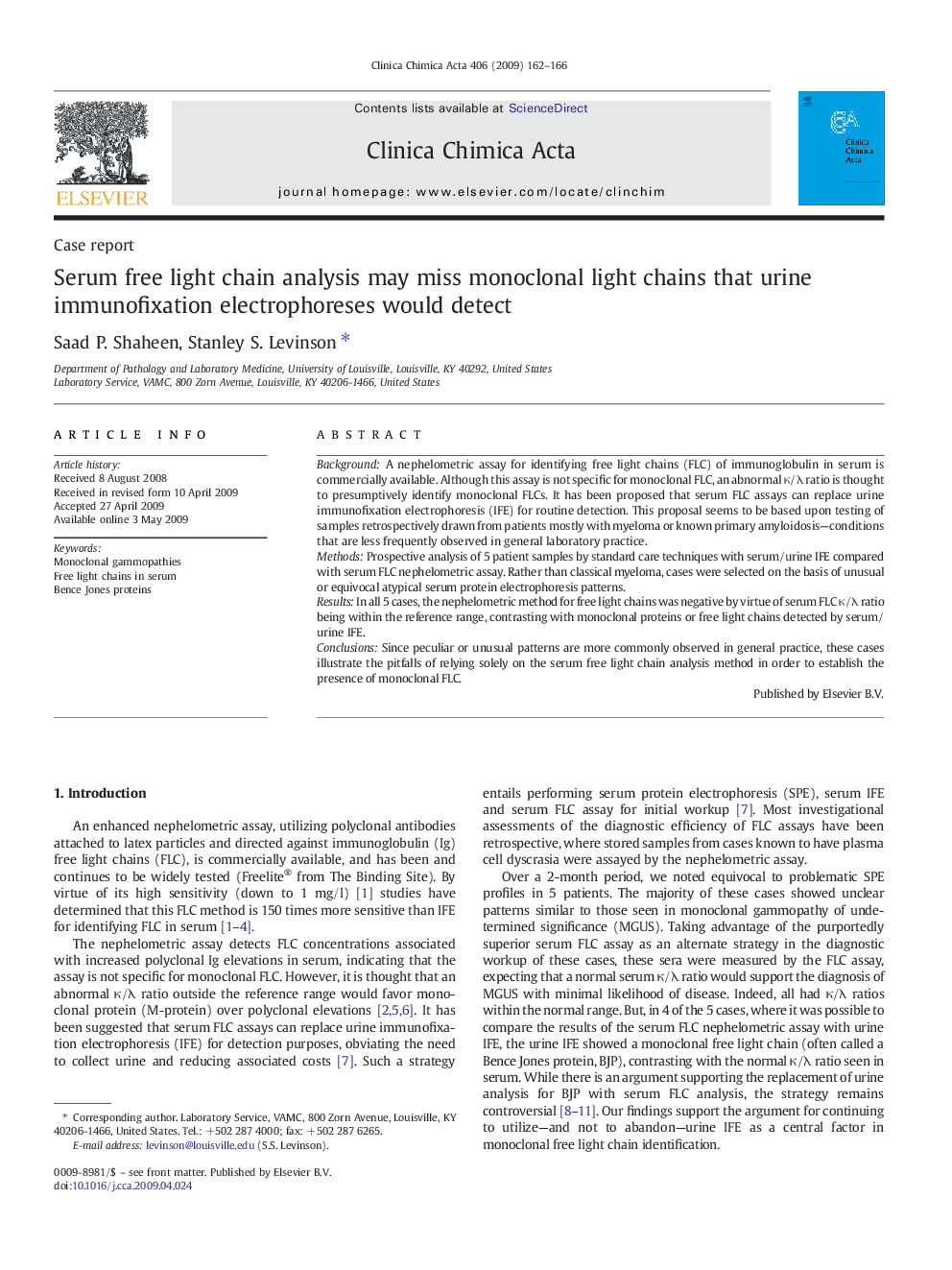| Article ID | Journal | Published Year | Pages | File Type |
|---|---|---|---|---|
| 1966591 | Clinica Chimica Acta | 2009 | 5 Pages |
BackgroundA nephelometric assay for identifying free light chains (FLC) of immunoglobulin in serum is commercially available. Although this assay is not specific for monoclonal FLC, an abnormal κ/λ ratio is thought to presumptively identify monoclonal FLCs. It has been proposed that serum FLC assays can replace urine immunofixation electrophoresis (IFE) for routine detection. This proposal seems to be based upon testing of samples retrospectively drawn from patients mostly with myeloma or known primary amyloidosis—conditions that are less frequently observed in general laboratory practice.MethodsProspective analysis of 5 patient samples by standard care techniques with serum/urine IFE compared with serum FLC nephelometric assay. Rather than classical myeloma, cases were selected on the basis of unusual or equivocal atypical serum protein electrophoresis patterns.ResultsIn all 5 cases, the nephelometric method for free light chains was negative by virtue of serum FLC κ/λ ratio being within the reference range, contrasting with monoclonal proteins or free light chains detected by serum/urine IFE.ConclusionsSince peculiar or unusual patterns are more commonly observed in general practice, these cases illustrate the pitfalls of relying solely on the serum free light chain analysis method in order to establish the presence of monoclonal FLC.
